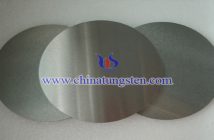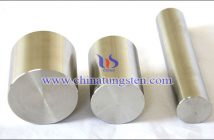Tungsten disulfide has wide application and is the compound of tungsten and sulfur with chemical formula WS2. It is black, insoluble in water and organic solvents, not react with acid and alkali except the mixture of concentrated nitric acid and hydrofluoric acid as well as aqua regia. It is nontoxic and nonmagnetic.
Since 1990s, the tungsten disulfide applied in industry is gradually wide, it is mainly used in five aspects including solid lubricant, catalyst, electron probe, battery electrode material and superconducting material, it is considered as high potential multidingal material.
 1.0 Lubricant
1.0 Lubricant
WS2 is a kind of essential lubricant used in military, aerospace, satellite, spaceship and space station field for special layered structure and hexagonal crystal structure. WS2 crystal structure makes it easy to slide, plays a role in reducing friction, and has the advantage of low friction coefficient.
2.0 Catalyst
Unsupported catalyst has attracted more and more attention due to its high hydrogenation activity. The unsupported catalyst WS2 is used in the petrochemical industry, which has the advantages of high cracking performance, stable and reliable catalytic activity, long service life and so on.
3.0 Electron probe
The crystal structure of WS2 is similar to that of graphene, WS2 nanotube has unique microstructure and many peculiar physical and chemical property. Researchers used it in atomic force microscope (AFM) and scanning tunneling microscope (STM) for probe scanning and scanning observation of various substances. It is found that WS2 nanotube has constant photoelectric effect, excellent photosensitivity and insensitive to water and air, and fullerene WS2 has wider application.
 4.0 Battery electrode material
4.0 Battery electrode material
Recent study shows that IF-WS2 nanoparticles and WS2 nanotubes have high selectivity and reactivity, and can be used as excellent hydrogen or lithium storage material.
5.0 Superconducting material
It is found that after the insertion of alkali metals (k, Na) into WS2 the charge is transfered, the material electrical property is changed, the fermi level is increased, the free electrons thinkness is significantly increased, the semiconductor material WS2 is changed into metal conductor and turns into the superconductor in the temperature range of 3.7-6.3k. In addition, the antimagnetic material WS2 appears paramagnetic property after the insertion of alkali metal (k, Na), which will be more widely used in the future.



